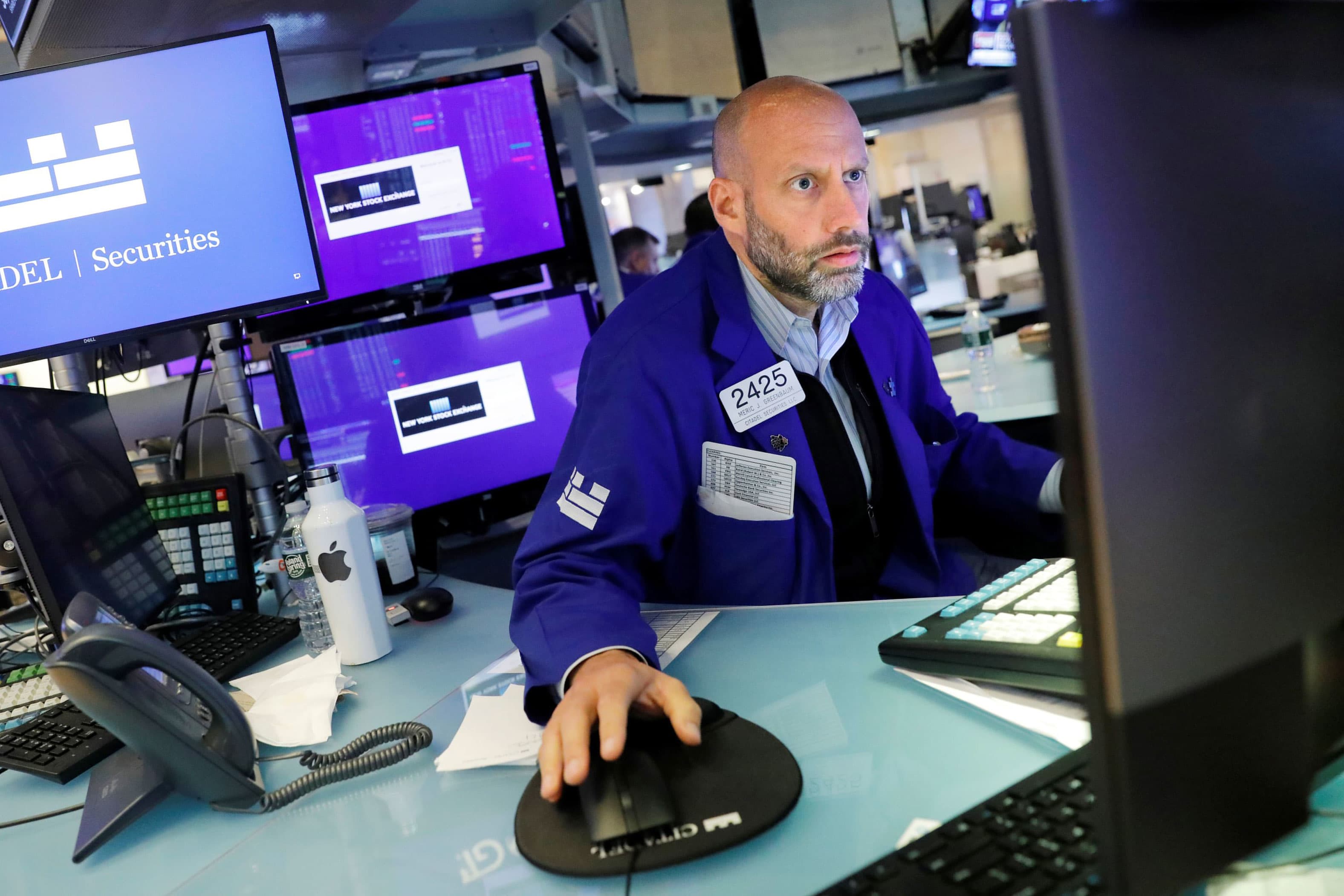U.S. stock index futures were little changed during overnight trading on Thursday, after stocks registered a fourth-straight day of losses.
Futures contracts tied to the Dow Jones Industrial Average advanced 10 points. S&P 500 futures and Nasdaq 100 futures were slightly higher.
During regular trading the Dow shed roughly 150 points, or 0.43%, while the S&P slid 0.46%. It was the fourth consecutive day of losses for each. The Nasdaq Composite dipped 0.25% for its second straight day of losses. It’s the first time since the middle of August that the tech-heavy index has registered back-to-back losses.
All three indices are on track to end the week in the red.
A better-than-expected weekly jobless claims number capped Thursday’s losses. The Labor Department said that first-time unemployment filings during the prior week dropped to 310,000, the lowest level since the pandemic took hold. Economists surveyed by Dow Jones were expecting a print of 335,000.
For the holiday-shortened week, the consumer discretionary sector is the best-performing S&P group, up about a quarter of one percent. The other ten sectors are all in the red. Industrial and real estate stocks are the biggest losers, with each sector down more than 2%.
Markets are in somewhat of a holding pattern until there’s more clarity around the Federal Reserve’s next move. The central bank kicks off a two-day meeting on Sept. 21, and the Street will be watching for an update on the Fed’s bond-buying program. On Thursday the European Central Bank left its monetary policy unchanged, but said that it will slow the pace of its asset-purchase program.
“The pace of policy changes will be gradual enough not to derail the economic recovery or the equity rally, while the differences between the more hawkish and more dovish central banks will create opportunities,” said Mark Haefele, UBS Global Wealth Management chief investment officer.
“We expect major central banks to remain supportive of growth, keeping rates lower for longer. This is positive for equity markets, particularly cyclical and value areas of the market,” he added.
Despite Thursday’s losses the major averages are still hovering around their all-time highs. The Dow is roughly 2% below its record, while the Nasdaq and S&P are about 1% from theirs.
“New highs in the market are not an issue as long as they are supported by fundamentals,” Keith Lerner, co-chief investment officer at Truist, wrote in a recent note to clients. “The biggest driver behind stock returns this year has been earnings, with a capital E. This is consistent with one of our key themes over the past year, that the earnings power of corporate America was underappreciated,” he added.
Second-quarter earnings season is largely in the rearview mirror. But earnings reports are still trickling out, with Kroger on deck before Friday’s opening bell.
Become a smarter investor with CNBC Pro.
Get stock picks, analyst calls, exclusive interviews and access to CNBC TV.
Sign up to start a free trial today
